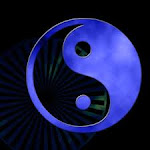Lets agree that an
Ace is the highest card in the deck and is worth the highest points. There are probably as many point systems for poker as there are poker games and the various ways to play them. I think it's best to keep it simple, so I rank the
Ace the highest, by about 2 points and the rest at about face value. My point system adds for pairs, connectors and suited cards, since an
AA or
AK should have a higher value than
AT or
A9 or
A4.
An
Ace therefore would be worth
12 points and a
K,Q,J,T would all be worth
10.
Since Kings out rank Jacks and Tens, it should really have a higher rank than 10. and giving a higher rank also to Jacks, so we should probably give a one point advantage of Jacks over Tens, which makes a Jack worth 11, Queen worth 12 and King worth 13. Now the Ace should have that 2 point advantage, so I'll give it 15 points.
It's hard to put a value on a pair since
22 will win heads up about 55% of the time and only 12% against a full table and beats
AK. Given that a deuce has about a 2 point rank and only 4 points counting both cards, based on face value, and
AK would have a value of
twenty-eight (15 for the Ace and 13 for the King), we should give a factor to pairs, suited cards and connectors. We'll start a
Pair off at
20 points and
add a point for card value. We will also
add one point for being
connected and
2 points for being
suited and
3 points if it's
connected and suited.
So the lowest pair (
22) would equal
22 points and a pair of threes (
33) would equal
23 points and a pair of nines (
99) would equal
29 points and add one point higher for each broadway card;
TT=30 (20+10),
JJ=31 (20+11), and
QQ=32 (20+12),
KK=33 (20+13), and
AA=35 (20+15)
22 vs AKs;
AKs = 31 points [(15+13) +1 for the connector, +2 for being suited] vs the 2 deuces @ 22 points.
If you loosly equate it to odds, then
AKs would be favored 31/22 or about 1.4:1.
(actually 1.409, but a tenth of a point is really no consideration in betting or looking at odds of any kind, not a factor at all, so round up) and
KK vs AKs; KK would be favored 33/31 or 1.06:1.
KK vs 22, KK favored 33/22 or 1.5:1
What's all this mean?
Only that you shouldn't bet the farm. At best, heads up you are usually about 49/51, more likely about 60/40 and at worst only a 3:1 dog, using normal odds, and normal hands for All-In bets, and the point system would only show a slight advantage, since it all changes by the river, and you can throw any point system out the window.
Favorite-to-underdog matchup Probability Odds, discounting suitability
Pair vs. 2 undercards (AA vs KQ is only slightly better than 88 vs 34)
83% to 17% or 4.9 : 1
Pair vs. lower pair (AA vs KK about the same as 88 vs 33)
82% to 18% or 4.5 : 1
















